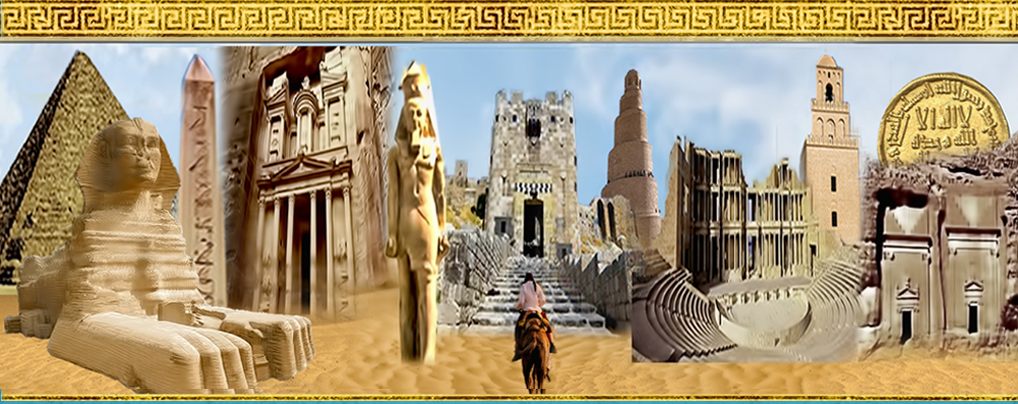Journal of the General Union of Arab Archaeologists

Abstract
تأثير الفكر القاجاري الأثري على تكوين وتوسع العمارة في الدولة خلال فترة رضا شاه بهلوي [Ar]
أصبح نشر وتعزيز الهوية الوطنية لإيران الحديثة من خلال التأكيد على الإرث الحضاري لعصر ما قبل الإسلام، والذي تم طرحه في الأوساط الفكرية للفترة القاجارية، سياسةً رسميةً للبلاد خلال الحكومة البهلوية الأولى وانعكس ذلك في تصميم عدد من المباني الحكومية الجديدة تحت عنوان الطراز «الأثري»؛ كما أن الأعمال التي تنتمي إلى الطراز المذكور تعتبر اليوم سمات دائمة للعصر البهلوي الأول. تتناول هذه المقالة مسألتين تتعلقان بهذا النوع من الهندسة المعمارية؛ أولاً، من أجل إنشاء طراز أثري وطني، كان هناك نوعان من الأنماط هى الأخمينية والساسانية، تجاهل المهندسون المعماريون عن وعي الطراز الساساني - باستثناء نماذج قليلة - وجعلوا العمارة والزخارف الأخمينية النموذج الرئيسي لعملهم. ثانيًا، على الرغم من الأهمية الكبيرة لبناء الهوية التاريخية لدى النظام البهلوي الأول، فإن المباني الحكومية التي تحمل هذا الطراز من العمارة تم بناءها في الغالب في العاصمة فقط، وتتواجد بقلة في الأجزاء الأخرى من البلاد. من خلال دراسة أفكار الشخصيات الجوهرية الأثري مثل فتح علي أخوند زاده وجلال الدين ميرزا قاجار وآغا خان كرماني، تم دراسة وتحليل المكونات الرئيسية لهذه الأفكار مثل الحاجة إلى الخروج على التقاليد، التنافس مع الغرب، إظهار القوة والنظر إلى التاريخ باعتباره كأداة، حيث اتضح أنه لا يمكن لأي طراز معماري أن يشمل جميع هذه المكونات سوى الطراز الأخميني. فيما يتعلق بالعوامل التي تحدد عدد الاعمال التي تحمل هذا الطراز، فقد أثيرت القضايا الاقتصادية والثقافية المتزايدة كعوامل رئيسية محددة لذلك. تخلى المعماريون الإيرانيون الداعون للحداثة عن طراز العمارة القديمة عند توليهم المشاريع الحكومية الكبيرة أواخر الثلاثينيات من القرن الماضي. يعتمد النهج النظري لهذه المقالة على نهج التاريخ الثقافي والطريقة التاريخية التحليلية.
[En] Discussions among Qajar intellectuals on promoting modern Iranian national identity with an emphasis on pre–Islamic heritage became official state policy in the Reza Shah Pahlavi government. This was manifested in several «archaic» public buildings now seen as the lasting monuments of this period. This study explores two points on this architectural style: Firstly, despite the availability of Achaemenid and Sassanid models to inspire their indigenous archaic style, most architects consciously ignored the Sassanid style and modeled their works after Achaemenid architecture. Secondly, despite the profound importance of archaic identity in the Pahlavi government, most such buildings were built in the capital and only a few in other regions. The ideas of major figures such as Fath–Ali Akhundzadeh, Jalal–al–Din Mirza Qajar, and Aqa Khan Kermani were explored to study the main components of archaism, such as anti–traditionalism, confrontation with the West, manifestation of power, and historical instrumentalism. Only the neo–Achaemenid style could have provided all these components, and economic and cultural problems explain the limited number of works. Iranian archaic architecture was rooted in 19th-century AD European eclecticism with a similar end. Like the western modernist movement’s ability to put aside eclecticism in the early 20th century AD, modernist Iranian architects designed most state projects in the late 1940s and dropped archaism. This historical–cultural study is based on a historical–analytical methodology.
Recommended Citation
Neyestani, Javad; Rahimian, Farshad; and Afhami, Reza
(2022)
"THE EFFECT OF IRAN’S QAJAR ARCHAISM ON THE DEVELOPMENT OF STATE ARCHITECTURE UNDER THE REZA SHAH PAHLAVI’S RULE,"
Journal of the General Union of Arab Archaeologists: Vol. 7:
Iss.
2, Article 9.
Available at:
https://digitalcommons.aaru.edu.jo/jguaa/vol7/iss2/9

